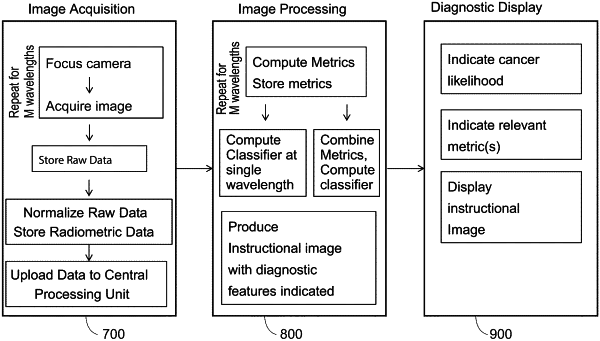| CPC A61B 5/444 (2013.01) [A61B 5/0075 (2013.01); A61B 5/14546 (2013.01); A61B 5/14551 (2013.01); A61B 5/14552 (2013.01); A61B 5/441 (2013.01); A61B 5/443 (2013.01); A61B 5/445 (2013.01); A61B 5/6898 (2013.01); A61B 5/0077 (2013.01); A61B 2560/0431 (2013.01); A61B 2562/0238 (2013.01); A61B 2576/00 (2013.01)] | 9 Claims |

|
1. An apparatus for detecting skin disease in a lesion on a subject's skin, comprising:
a mechanical fixture having a flat surface to position or press against the subject's skin to define a distal imaging plane containing said lesion;
a camera adapted to obtain a lesion image and image data from light reflected by said distal imaging plane;
a processor adapted to process the image data with a clock-like sweep algorithm, comprising forming a line segment between the center of the lesion image and the border of the lesion image, evaluating brightness of pixels on the line segment as the line segment rotates around the center of the lesion with one end of the line segment fixed at the center of the lesion image, and evaluating the pixel brightness in the image to obtain metrics and/or one or more classifiers defining the rotational symmetry of the lesion; and
an output device that indicates a likelihood of the presence or absence of skin disease in the subject from the metrics and/or one or more classifiers.
|